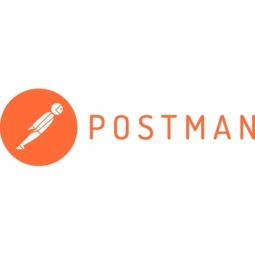公司规模
SME
地区
- America
国家
- United States
产品
- Postman Pro
技术栈
- .NET
- Node.js
- React
实施规模
- Enterprise-wide Deployment
影响指标
- Productivity Improvements
- Digital Expertise
技术
- 应用基础设施与中间件 - API 集成与管理
适用行业
- 医疗保健和医院
适用功能
- 产品研发
- 质量保证
服务
- 软件设计与工程服务
- 系统集成
关于客户
Healthwise 是一家位于爱达荷州博伊西的公司,致力于开发健康教育和应用程序,以提高医疗保健质量。他们的目标是让患者更容易获得他们需要的信息,以便更好地管理他们的健康,从而创造更好的消费者体验和健康结果。Healthwise 使用一套 REST API 让客户能够访问健康内容,并能够向患者和其他健康消费者提供和开具这些内容。该公司拥有一支由 50 名工程师和 QA 组成的开发团队,他们使用 .NET、Node.js 和 React 作为开发语言。
挑战
Healthwise 是一家开发健康教育和应用程序以提高医疗保健质量的公司,该公司正在寻找一种向内部客户提供 API 集合的方法。他们希望创建一个可以与公司其他团队共享的“单一事实来源”。他们还希望生成 API 文档并针对 API 创建验收测试。挑战在于找到一种可以满足所有这些需求并无缝集成到现有工作流程中的工具。
解决方案
Healthwise 选择使用 Postman Pro 作为协作工具,为内部客户提供 API 集合。Postman Pro 允许 Healthwise 开发人员解决方案团队将 Postman 集合统一为一个“单一事实来源”,然后可以与公司内的其他团队共享。团队将这些集合与 Postman 环境一起使用,这些环境存储本地、集成、测试和生产服务器环境的配置。作为开发工作流程的一部分,团队更新了共享集合,以确保内部客户了解最新更改。然后,这些集合通知外部客户可以使用的新集合,从而加快与 Healthwise API 的集成。Healthwise 还使用 Postman 生成 API 文档。他们导出 Postman 集合,然后将其转换为他们喜欢的 OpenAPI 格式。此过程使团队能够灵活地利用任何接受 OpenAPI 的 API 门户。能够同时生成 API 文档和 Postman 集合,大大加快了开发速度并确保了文档的准确性。作为下一步,Healthwise 计划探索使用 Postman 集合来创建端点的验收测试。
运营影响

Case Study missing?
Start adding your own!
Register with your work email and create a new case study profile for your business.
相关案例.

Case Study
Hospital Inventory Management
The hospital supply chain team is responsible for ensuring that the right medical supplies are readily available to clinicians when and where needed, and to do so in the most efficient manner possible. However, many of the systems and processes in use at the cancer center for supply chain management were not best suited to support these goals. Barcoding technology, a commonly used method for inventory management of medical supplies, is labor intensive, time consuming, does not provide real-time visibility into inventory levels and can be prone to error. Consequently, the lack of accurate and real-time visibility into inventory levels across multiple supply rooms in multiple hospital facilities creates additional inefficiency in the system causing over-ordering, hoarding, and wasted supplies. Other sources of waste and cost were also identified as candidates for improvement. Existing systems and processes did not provide adequate security for high-cost inventory within the hospital, which was another driver of cost. A lack of visibility into expiration dates for supplies resulted in supplies being wasted due to past expiry dates. Storage of supplies was also a key consideration given the location of the cancer center’s facilities in a dense urban setting, where space is always at a premium. In order to address the challenges outlined above, the hospital sought a solution that would provide real-time inventory information with high levels of accuracy, reduce the level of manual effort required and enable data driven decision making to ensure that the right supplies were readily available to clinicians in the right location at the right time.

Case Study
Gas Pipeline Monitoring System for Hospitals
This system integrator focuses on providing centralized gas pipeline monitoring systems for hospitals. The service they provide makes it possible for hospitals to reduce both maintenance and labor costs. Since hospitals may not have an existing network suitable for this type of system, GPRS communication provides an easy and ready-to-use solution for remote, distributed monitoring systems System Requirements - GPRS communication - Seamless connection with SCADA software - Simple, front-end control capability - Expandable I/O channels - Combine AI, DI, and DO channels

Case Study
Driving Digital Transformations for Vitro Diagnostic Medical Devices
Diagnostic devices play a vital role in helping to improve healthcare delivery. In fact, an estimated 60 percent of the world’s medical decisions are made with support from in vitrodiagnostics (IVD) solutions, such as those provided by Roche Diagnostics, an industry leader. As the demand for medical diagnostic services grows rapidly in hospitals and clinics across China, so does the market for IVD solutions. In addition, the typically high cost of these diagnostic devices means that comprehensive post-sales services are needed. Wanteed to improve three portions of thr IVD:1. Remotely monitor and manage IVD devices as fixed assets.2. Optimizing device availability with predictive maintenance.3. Recommending the best IVD solution for a customer’s needs.

Case Study
HaemoCloud Global Blood Management System
1) Deliver a connected digital product system to protect and increase the differentiated value of Haemonetics blood and plasma solutions. 2) Improve patient outcomes by increasing the efficiency of blood supply flows. 3) Navigate and satisfy a complex web of global regulatory compliance requirements. 4) Reduce costly and labor-intensive maintenance procedures.

Case Study
Cloud-based healthcare solution for Royal Philips
Royal Philips wanted to launch its cloud-based healthcare solution HealthSuite Digital Platform in China to deliver services to help cope with challenges related to urbanization and population growth. Philips wanted to achieve this goal by combining mobile, cloud computing and big data technologies. To bring this platform and product to market, Philips required cloud computing and local technical service capabilities in China, in addition to a flexible IT infrastructure that could handle user requests.








